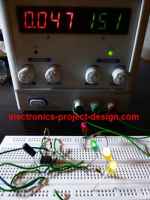Conformal Coating Of Printed Circuit Board Assembly
Conformal coating is a protective non conductive dielectric layer that is applied onto the printed circuit board assembly to protect the electronic assembly from damage due to contamination, salt spray, moisture, fungus, dust and corrosion caused by harsh or extreme environments.
It is usually used in products that are used in outdoor environments where heat and moisture are prevalent. Coating also prevents damage from rough handling, installation, reduction of mechanical and thermal stress. It also prolong the life of the product during its operation.
At the same time, it helps to increase the dielectric strength between conductors enabling the design of the PCB to be more compact and small. It also acts to protect circuitry and components from abrasion and solvents.
When coated, it is clearly visible as a clear and shiny material. Some coatings are hard, while others have a slightly rubbery texture. Most coatings include a marker that appears greenish white when view under UV light. This marker enables easy inspection of the coating thoroughness checking during production.
In the past, coatings are only applied to military and life/medical products as the cost and the process of doing this was high then. In recent years, the development in material and new processes has enabled consumer electronics products to be coated as well. This will be becoming more common and will become a norm as circuitry and electronic components continue to shrink in size and dimension.
Types Of Conformal Coating
Commonly used conformal coatings are silicone, epoxy, acrylic, urethane and Paraxylene. The chemical and physical properties of the materials differs and therefore offer different degree of protection. The basic characteristics of the materials are described below.
Silicone
Silicone coatings range from elastoplastic which is a tough, abrasion-resistant to soft, elastomeric materials. Silicone are typically used in high temperature environments. It has good moisure and humidity resistance.
It has good thermal shock resistance due to its flexibility and is also easy to apply and repair. Its moisture resistance is similar to urethane and acrylic and Dielectric withstand is lowered than for the other coatings (1100 volts/mil). Flexibility of coating allows for much thicker film build than comparable acrylic or urethane coating. Its typical temperature range is -65 °C to 200 °C.
Epoxy
Epoxy coatings are very hard, usually opaque, and good at resisting the effects of moisture and solvents. Epoxy is usually available as a two part thermosetting mixture and shrinks during curing leaving a hard difficult to repair film. It possesses excellent chemical and abrasion resistance but can cause stress on components during thermal extremes. Epoxy is quite easy to apply but nearly impossible to remove without damaging the components.
Acrylic
Acrylic coatings are typically solvent based. Thermoplastic lacquer base means that the coating is easy to be applied andrepaired. They are usually low cost, tough, hard, and transparent. It exhibits low moisture absorption and have short drying times.
However, this type of coating does not demonstrate resistance to either abrasion or chemicals especially petroleum solvents and alcohol. It typical dielectric withstand is greater than 1500 volts and has a temperature range of -59 °C to 132 °C.
Urethane
Urethane coatings are hard and durable that has excellent resistance to solvents. It has similar moisture resistance to acrylic and silicone. Shrinkages during curing and hard film may stress the electronic components. It is difficult to apply and hard to be removed. Temperature range is quite similar to acrylic. However, its lack of reparability often prevent their use.
Paraxylene
Paraxylene coatings are highly uniform and yield excellent pin coverage. Their limitations include high cost, sensitivity to contaminants, and the need for a vacuum application technique.
Coating process
Before coating a printed circuit board, it must be cleaned and de-moisturized within 8 hours of conformal coating. De-moisturizing can be done in an oven with temperature set to 88 °C to 98 °C for 4 hours. Methods of coating include spraying, brushing or dipping. Chemical vapor deposition is used to coat with paraxylene. Steps of a spray coating are as listed below.
a) Board is cleaned.
b) Protected areas like terminal pins, connectors are masked off or removed.
c) Coating is applied using a spray process on both sides of the PCB and its edges.
d) Coating is cured using oven according to the coating type.
e) Masking is removed and any removed parts are reassembled.
f) Board undergoes full production testing to ensure functionality of board is not affected by the process.
Non-Volatile Organic Compounds Coating
In recent years, it was discovered that the solvents that are used in most conformal coating are not environmental friendly and is also a cause of concern for the human health. Most solvents have Volatile Organic Compounds or VOC which evaporate at room temperature.
These VOCs caused the formation of ozone and smog hence having an effect on the growth of plants and vegetation. This is a serious air pollution that also affects the people living within the vicinity. It caused irritations if exposed continuously and may be carcinogenic.
Non-VOC coating based on polyurethane technology has since being developed to replace the solvent-based VOC coating. When coating of PCB need to be done in huge quantity, all effort should be taken to use non-VOC coating even though the processes may take longer and more costly to implement.
Back To Conformal Coating Home Page



New! Comments
Have your say about what you just read! Leave us a comment in the box below.